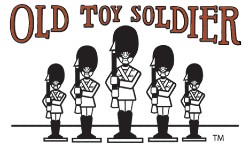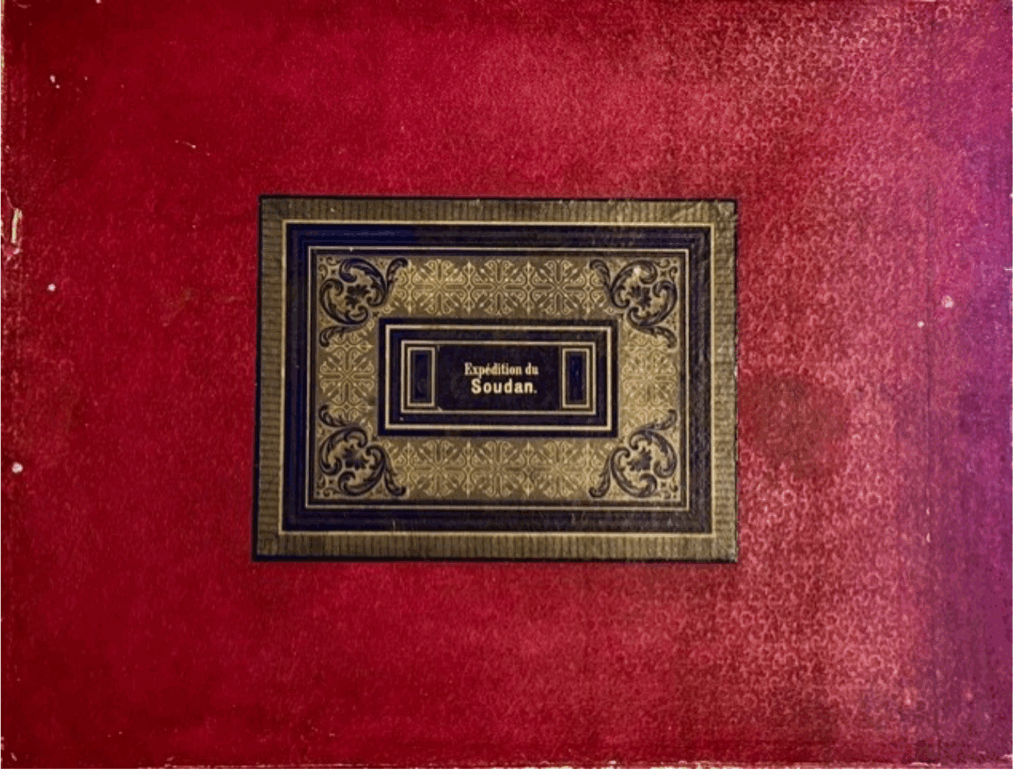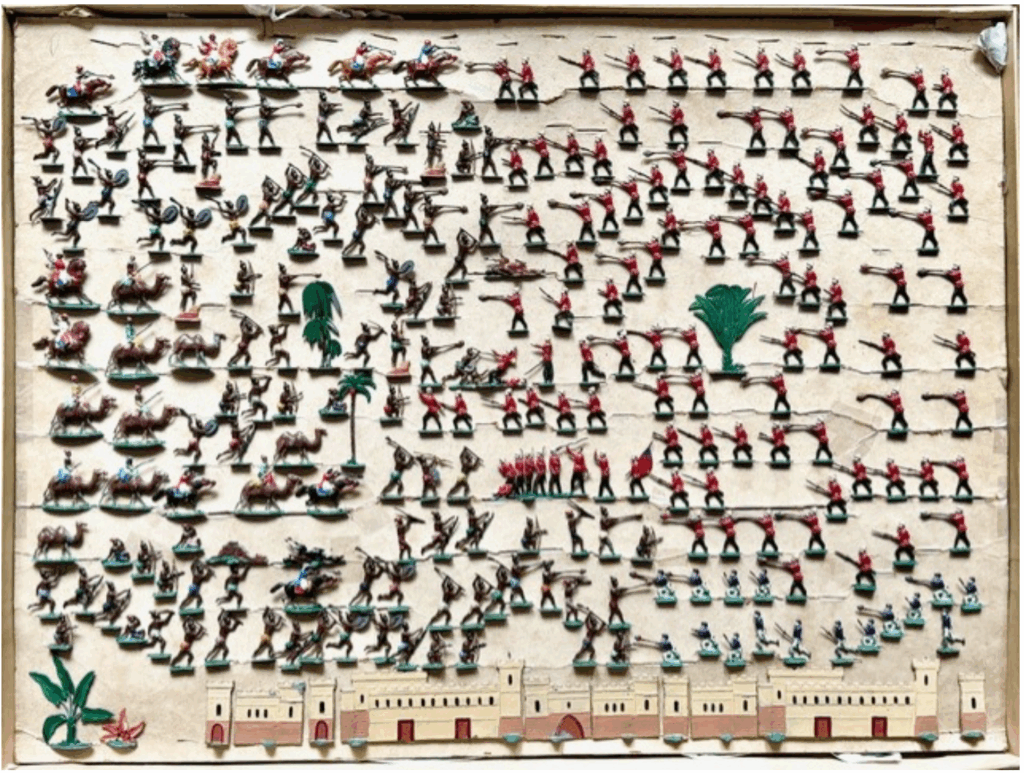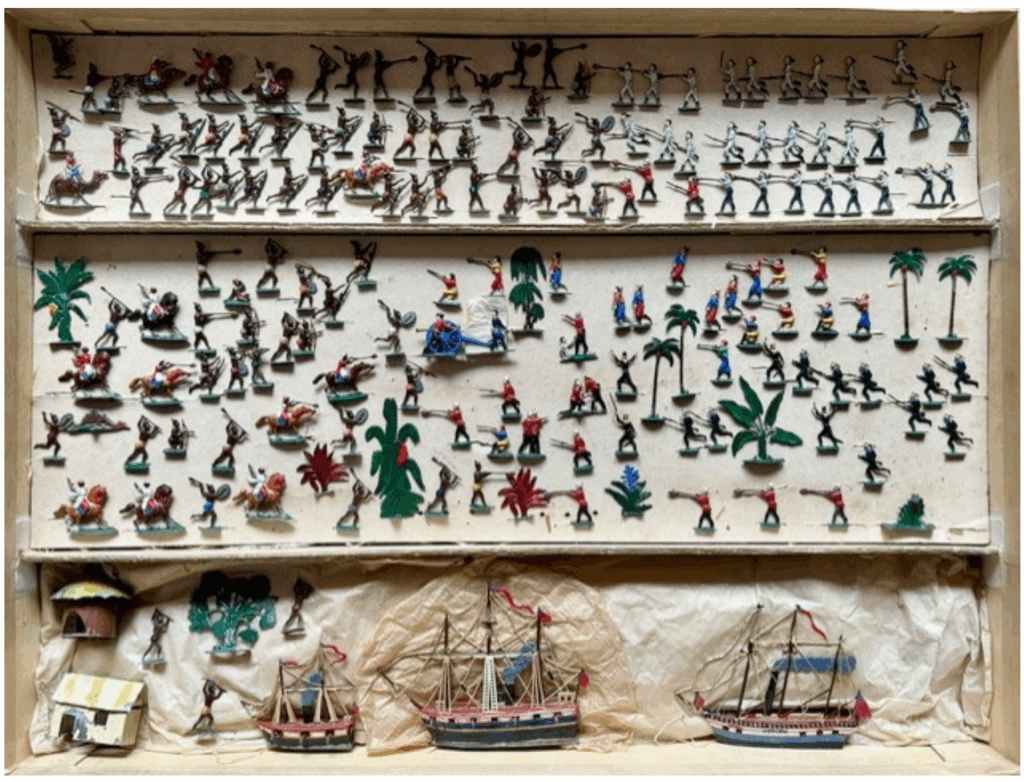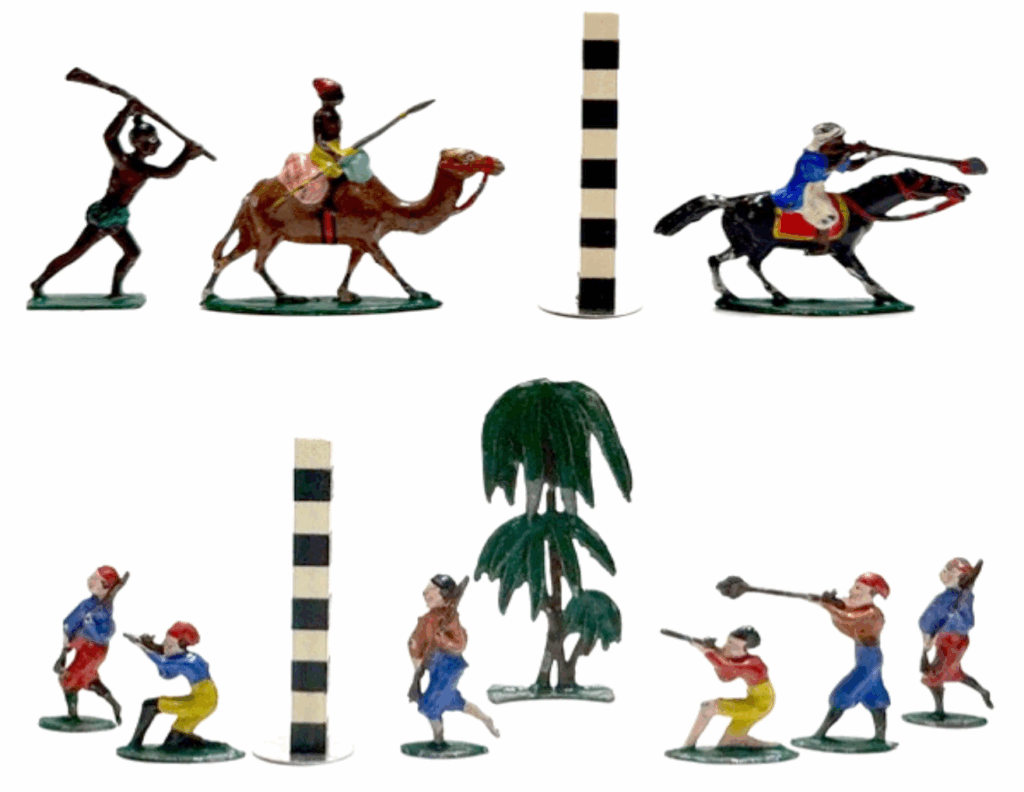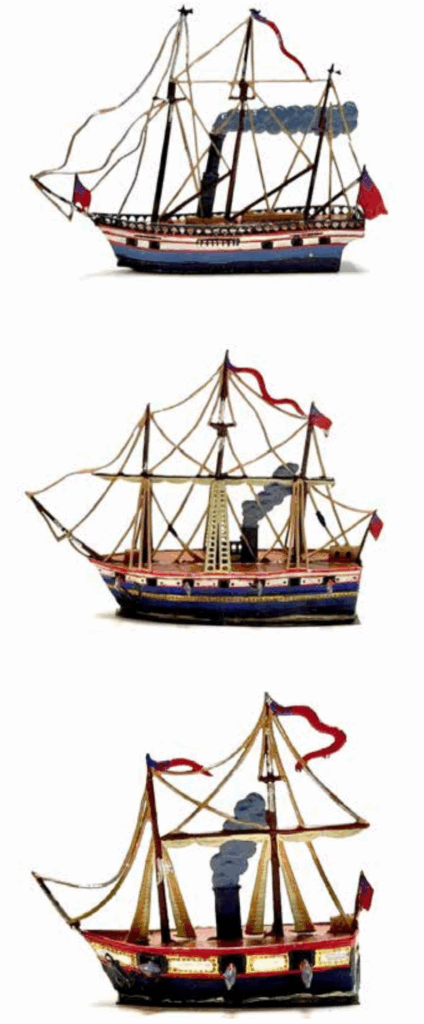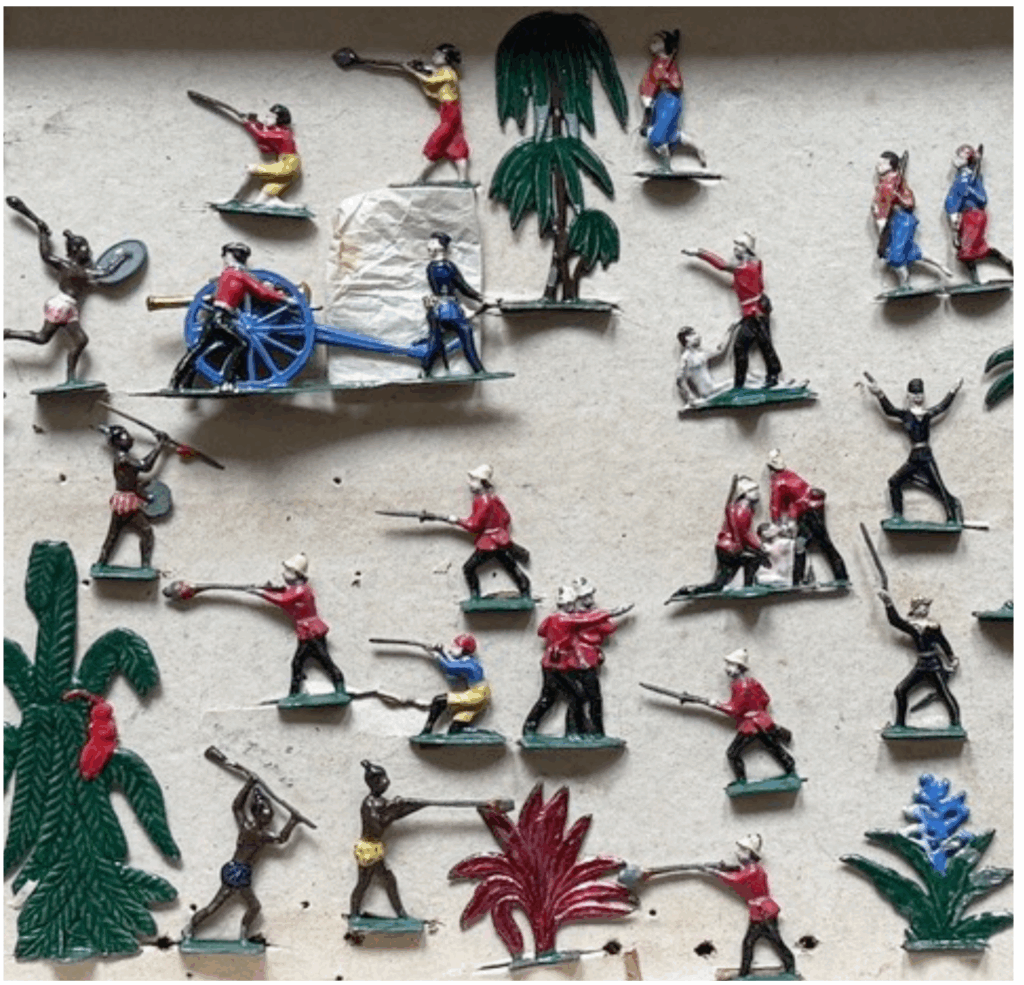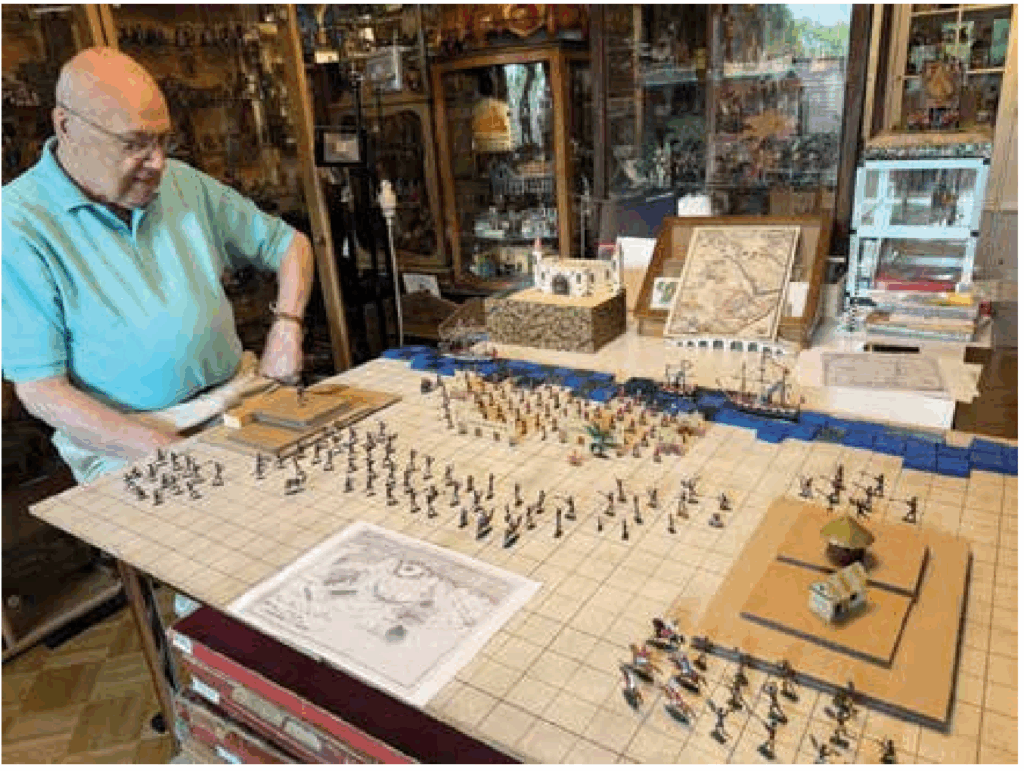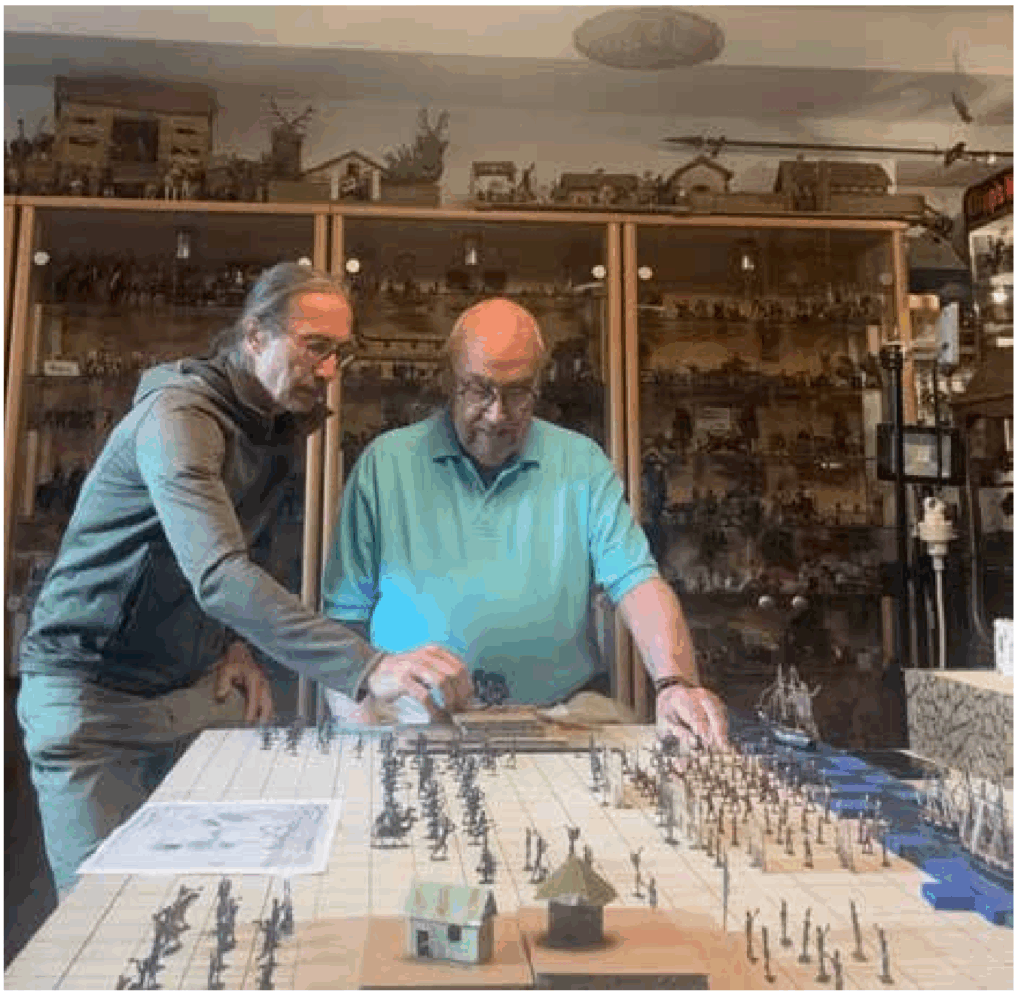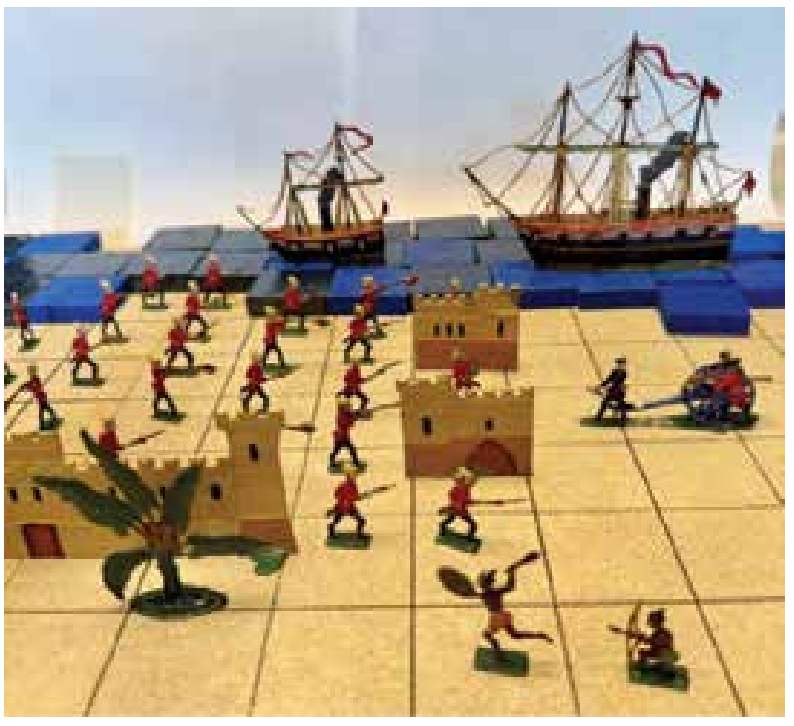Introduction
Thanks to the kind mediation of a collector friend, a few years ago, I was able to purchase a very large box of lead figures manufactured by Krause in Gotha. The original lid inscription reads: “Expédition du Soudan”. This means that it is an export box for the French market. This surprised me because when I thought of Sudan I was thinking more about British rather than French colonial history. I would think that it was not really a particularly exciting topic for the French market!? Especially considering the final outcome, when the British prevailed against the French (see the brief historical summary box!)
I also found the size of the box remarkable at 20 x 26 inches or 50 x 68 cm. But when I took the lid off, the real surprise came. At first glance I could see the large number of figures in the box, and then there was a second layer underneath! These contained a huge selection of individual figures, groups, a fort, huts, plants, fully rounded ships and other accessories. These are 30-35mm scale, semi-ronde figures.
In total there are around 480 individual pieces. In the 1924 Krause Figures Catalog, of which I have a copy, the largest box with figures of this size has a maximum of only 100 figures.
List of contents in detail:
- 140 figures of English infantry in colonial uniform, with pith helmet, advancing/ attacking.
- 60 sailors (English or possibly French?)
- 17 light-skinned soldiers in colorful uniform with baggy pants. (probably French?), fighting
- 3 fully rounded gunboats under the English flag
- 167 black-skinned people with loincloths, fighting with spears, bows and arrows and rifles
- 38 camels or horses with riders
- 7 unridden horses and camels
- 18 plants and scenic accessories, including parts of the fort
- 2 fully rounded accessories, house and hut
- The foot figures are about 30-35 mm in size, a size that plays an important role in the semisolid figures from Krause.
Trying to figure out what it is all about?
From the British perspective: the set could represent the First or Second Sudan Campaign/Expedition. But there was also a confrontation between France and Britain – see the text box. Is it about an expedition in 1882 or 1899?
We have the English ships and we have a Fort. But it seems that there are also figures in French uniforms in the box?
(See the List in detail). There are two small groups where British soldiers (in red coats) help naked white people – this is particularly remarkable. Perhaps it is about the liberation of prisoners? These very specific scenes suggest a particular historical background, although unfortunately I cannot understand it at the moment.
The figures in the set do not seem to square up with any particular incident in the historical summary shown in the text box. I cannot identify any important figure such as Gordon, Kitchener, etc. Moreover, I cannot clearly identify the artillery group. I am not aware of any blue cannons used among French or British troops. The red jackets seem to indicate a predominantly British presence. If the Battle of Omdurman in 1898 is depicted, the black-skinned troops could be the Dervish army. But by then the British were clad in khaki rather than red. It is a mystery!
Does any reader have any clearer idea what this set is about? It surely must be of significance for Krause to do such a big box? Even though it looks that this is for the French market, because of the box label, maybe it is mainly about the British rather than the French?
Historical background – Anglo-French Sudanese Expeditions in the late 19th Century
- The Suez Canal was built by the Suez Canal Company, founded by French diplomat Ferdinanad de Lesseps. De Lesseps secured permission from the Ottoman viceroy of Egypt, Sa’id Pasha, to build the canal. Construction began in 1859 and completed in 1869. Originally it was jointly owned by a French and Egyptian consortium.
- The Canal was officially opened on November 17, 1869. It provided a direct route between the Mediterranean and Red Seas, significantly reducing travel time and distance for ships between Europe and Asia. This was especially important for the British, whose Royal Navy and Mercantile Marine almost literally ruled the waves. Britain found the Canal especially useful in linking its disparate empire (on which the sun never set).
- The Egyptian part of the consortium soon ran into serious financial difficulties, and in 1975 Britain stepped into the breach, buying up their shares.
- In 1882, the British occupied Egypt to secure the Canal and quell a nationalist uprising led by Ahmed ‘Urabi against the Khedive Tewfik Pasha. The British successfully defeated the Egyptian army at Tel El Kebir led by ‘Urahbi in September 1882, establishing firm British influence over Egypt. This lead to subsequent intervention in the Sudan, where British, Egyptian, and Indian troops fought against Sudanese rebels, culminating in the Mahdist War.
- In Sudan, the rebellion led by the Mahdist leader Muhammad Ahmad had gained momentum. Colonel Hicks (ex Indian Army) led an early expedition of Egyptian troops in 1883 attempting to suppress this revolt. This ended tragically for Hicks and his troops. On Monday 5 November 1883 the day ended with the complete annihilation of his Egyptian force. Approximately 100 survivors took refuge under wagons and in thorn bushes. These were prodded out and later dragged naked with ropes around their necks into El Obeid as part of a triumphal procession led by the Mahdi atop a magnificent white camel. None of Hick’s European staff survived.
- General Gordon was subsequently sent to Khartoum to sort matters out but with inadequate support. Following his defeat and death in Khartoum in 1885,General Kitchener, was sent to reconquer Sudan in 1896 and avenge Gordon. He eventually defeated the Mahdist forces at the Battle of Omdurman in 1898.
- While he was killed in the Battle of Khartoum in 1885, there’s no record of Gordon being stripped naked as a form of punishment or desecration. The general was killed in battle and his body was treated with respect, according to all reliable historical accounts.
- The Fashoda Incident was a near-war crisis that evolved in 1898 when a French expedition reached Fashoda (in present-day Sudan) at the same time as the British force under Kitchener. This lead to a standoff that was ultimately resolved diplomatically and peacefully.
- In 1899, Britain and Egypt reached an agreement to administer Sudan jointly, with a governorgeneral appointed by Egypt, with British consent, effectively making Sudan a Crown colony. The Mahdist Revolt was finally extinguished at the Battle of Umm Diwaykarat in November 1899.
- The Anglo-French Sudanese expeditions, culminating in the Fashoda Incident of 1898, involved a French expedition led by Jean-Baptiste Marchand. He was aiming to link French colonial territories across Africa. He set out in 1896 from Loango. As reports of Marchand’s advance reached London, British authorities, fearing French encroachment on the Nile valley,
the British expeditionary force led by Kitchener was ordered to move south towards Fashoda. - Marchand reached Fashoda on July 10, 1898, and occupied an abandoned Egyptian fort. Kitchener, having defeated the Mahdists at the Battle of Omdurman, arrived at Fashoda on September 18. Neither side was willing to give up their claims to the fort. However, fearing a military conflict, they agreed that Egyptian, British, and French flags should all be flown over the fort while awaiting further instructions from their respective governments.
- The French, fearing the possibility of war with Britain, and anxious to gain British support against Germany, chose to ignore the outrage in domestic opinion in France ordering Marchand and his troops to withdraw. The French and British governments eventually agreed (March 21, 1899) that the watershed of the Nile and the Congo rivers should mark the frontier between their respective spheres of influence. This solution led to the Anglo-French Entente of 1904.
While thinking about the idea that the Krause Figures could be usable to play different Battles of the Sudan Campaign I had the well-known Toy Soldier Collector Peter Clark from Washington as guest in my house. We talked about that possibility. After a while, we agreed to try a game. It was great fun to do.
We played using the rules of ”Jungdeutschlands Schlachtenspiel” – an early German Game from around 1910, made by Hausser, Elastolin, Germany. It follows different rules from other games with a combination of “Halma” (close to Chinese Checkers) for the Foot Figures and allowing the Mounted Figures make a play like the Knight in chest, but here he is allowed a double jump.
We used old Battle Maps referring the Battle of Omdurman from 1898 (Sudan Campaign) and the figures matched very well. The 33mm size of the semi solid figures (1.3 inch) fits perfectly for this game, which took 2 hours! This experience confirms my belief that the box was made to play different Themes and Battles of the Sudan Campaign!
The last three pictures show Peter and myself having fun!
